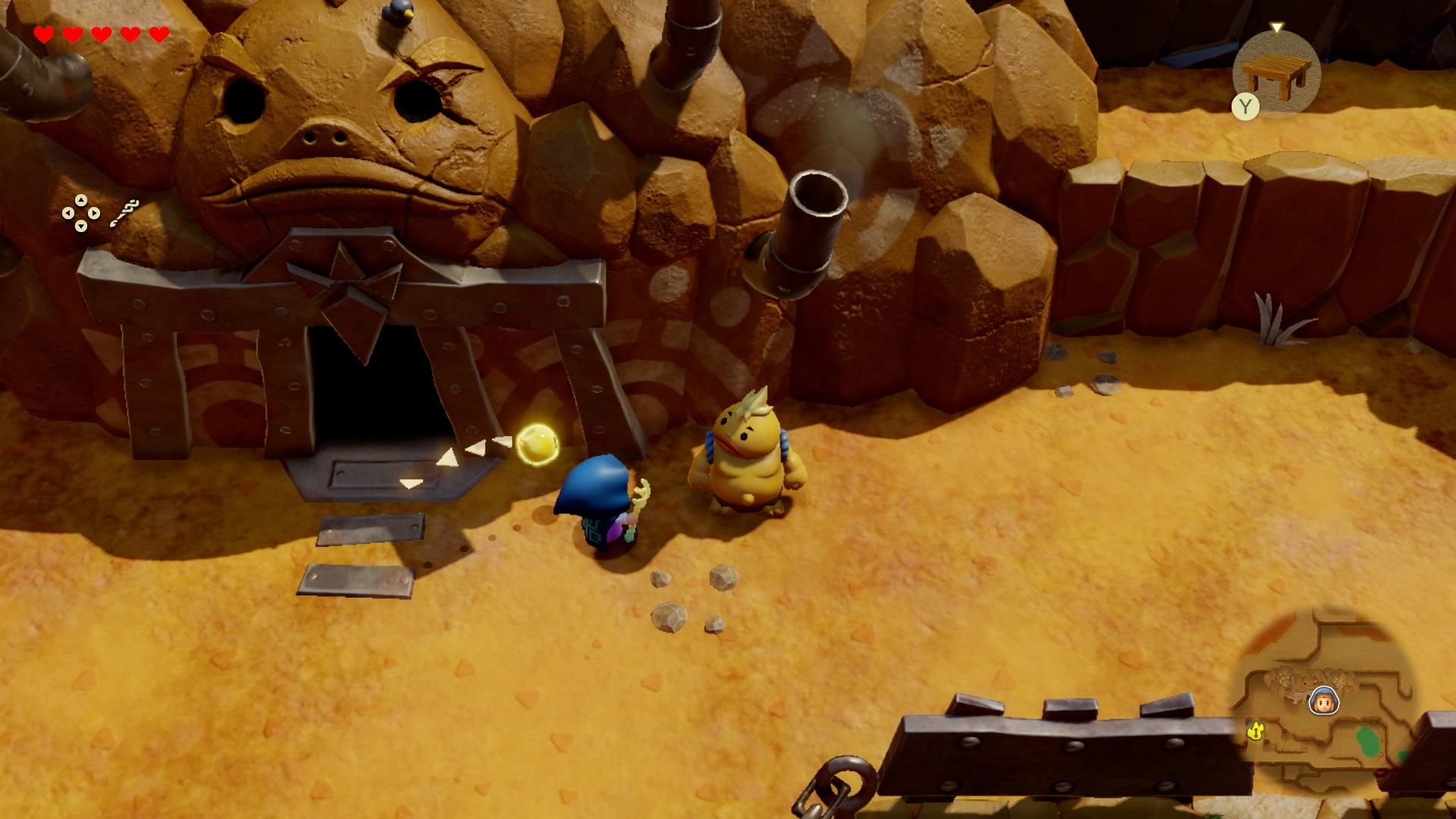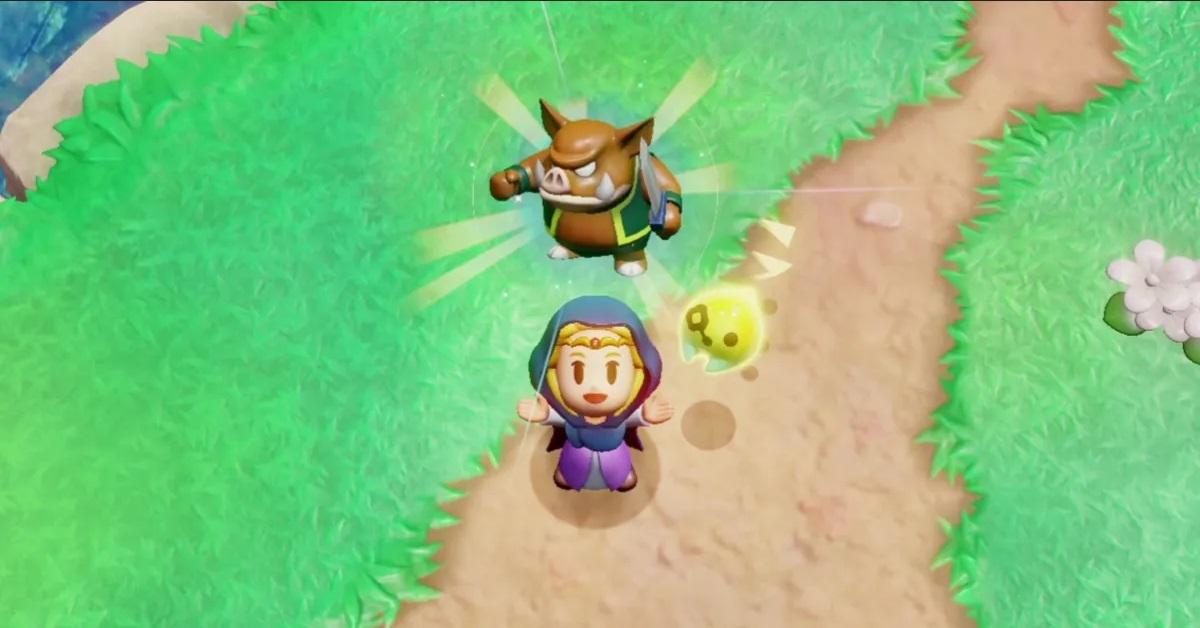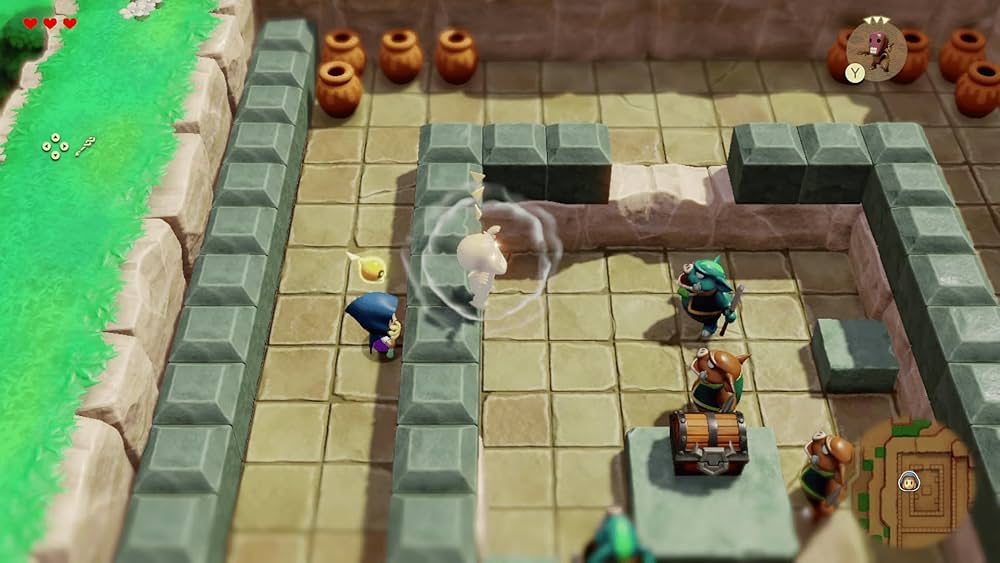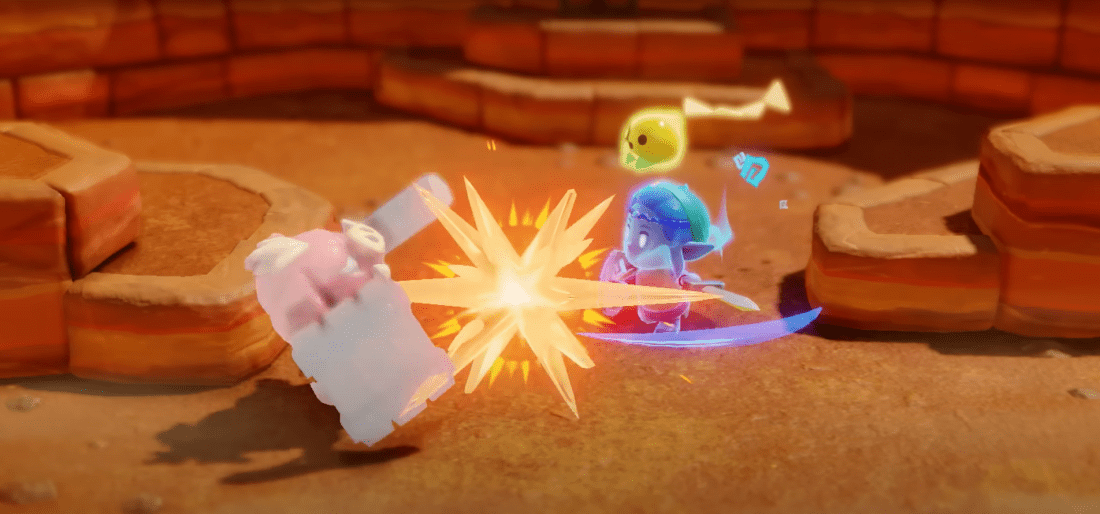The latest Legend of Zelda game on the Switch puts the titular princess in the lead role for the first time for an experience that’s both refreshing and familiar.
The Legend of Zelda: Echoes of Wisdom
Developed By: Nintendo, Grezzo
Platforms: Nintendo Switch
Release Date: September 26, 2024
Plenty of fans were surprised when a new Legend of Zelda game was revealed to be coming this year, though it’s hard to argue about getting more. With it’s top down style reminiscent of the classic games from the SNES and handheld eras and focus on simple combat/puzzle based dungeons, Wisdom feels like a purposeful blast from the past. And yet, with Zelda taking on the protagonist role and a whole new gameplay mechanic, it’s far from the same old, same old. The result is utterly delightful.

A New Hero Emerges
The basics of Echoes of Wisdom‘s story are relatively straightforward. A bunch of rifts have opened up in the kingdom of Hyrule, sucking up chunks of land and people, while unleashing hordes of monsters upon the land. When the hero, Link, is sucked into one of these rifts, it’s up to Zelda to set things right.
With the help of Tri, a magical spirit creature who can fix rifts, you set about repairing the damage done to your kingdom by crafting “echoes” of the objects and monsters you encounter. You’ll have to explore far and wide to solve the mysteries of the dangerous rifts and bring back all those who’ve been lost.

What’s Old is New
Right off the bat, one of the things I love about this game is a return to the old-school, top-down approach. To be entirely honest, it’s my favorite way to play any Zelda game, and I’m honestly not a huge fan of the full 3D world ones. I’ve always contended the handheld games (not including Switch here) are the best in the franchise. So yes, that means everything from the 64 titles to Wind Waker and even Breath of the Wild/Tears of the Kingdom were…not for me.
Don’t get me wrong, I recognize the technical prowess of them, and the things they bring to the table…I just struggle to enjoy them. As such, I was thrilled when Echoes of Wisdom was announced. A new top-down Zelda game that wasn’t a remake? Sign me all the way up.
Almost immediately upon kicking up the game, I felt transported. THIS is my Zelda and I was thrilled with how instantly familiar it all felt. More than just the visual style, how you interact with other characters, how the story is conveyed, and the overall mechanics are designed to capture that classic Legend of Zelda formula.
What’s impressive, however, is how it still manages to feel fresh, despite all of this. Obviously, the biggest change this time around is the fact Zelda herself is taking on hero role. She isn’t Link, and doesn’t have the same martial prowess at her disposal. Instead, Zelda must rely more on her wits and the use of magical “echoes” in order to defeat enemies and survive treacherous dungeons.

Do I Hear an Echo?
If you’ve watched any of the trailers, you should already have a feel for how the echo gameplay system works. Basically, there are a number of items (even enemies) in the world you can create copies of to use as needed. To do so, however, you gotta learn these echoes, by exploring the world and fighting enemies (you can learn enemy echoes the first time you defeat them). While you won’t be able to learn everything within the world, I was shocked at the amount of echoes you’re able to discover on your journey. Even as some feel redundant, there was a genuine thrill every time a spotted a new one to learn.
On the surface, the overall system is relatively straight forward. Every echo you manifest has a “cost.” The trailing triangles streaming from the back of your glowing companion, Tri, shows how much you can afford. You initially start the game with only a small amount of these triangles (three), but as the game continues you can “level up” which will allow you to afford more powerful echoes.

For example, some monsters only cost one triangle. Meaning at the start, you can bring out three of them to help fight your battles. Stronger monsters can cost more, however, limiting how many you have out at one time.
The types of echoes you’ll use essentially boil down to two categories: things that affect the world and monsters for combat. World impacting echoes are things like boxes/tables, which can be used to reach higher elevations or even block in enemies/paths. Down the road, you’ll find some more complicated echoes with increased effects (e.g. a trampoline for higher jumps, a fan to blow away sand and enemies).
Then there are the monsters. Almost like Pokémon (though I’d argue Ni no Kuni would be the more apt comparison) you’ll send out monster echoes you’ve collected out to handle the bulk of combat. The enemies you’ll encounter have different weaknesses, and some of the monsters you’ve learned will be more effective against them. As such, you’ll have to continually balance out the cost of your echoes—and the abilities they bring—to just about every encounter.

Always Another Way
While I love how many echoes there are to find/learn, how you use them on your journey is where the game truly shines. There’s a surprising amount of depth to the overall mechanics, that go far beyond simply stacking items to get what you need or throwing out monsters for battle.
There’s a lot of strategy involved in combat (especially with bosses), as you struggle to balance out the cost of echoes and the monsters most effective, all in real time as you try to dodge direct attacks. But, simply traversing the kingdom of Hyrule will keep you on your toes.
Getting to tucked away treasure chests or figuring out how to get around dungeon obstacles will have you diving deep into your bag of tricks and trying out new combinations. You know where you need to go, can often see the “secrets” for you to collect, but getting to your destination is entirely up to you.

That’s where it gets fun, mostly because there doesn’t seem to be a “wrong” way to do things. Some echoes might make a situation easier, but that doesn’t mean you can’t make things work with a combination of others. Figuring this out makes the world feel more open than expected and made me look at puzzles in a different way. In this way, even the simplest of tasks keep you engaged in the game and constantly thinking.
This aspect is only increased as the game progresses and you unlock new options (like Tri’s Bond ability and the Swordfighter form). Rather than feel overwhelming, every new addition to the gameplay is more like an expansion to the possibilities. Yes, there are some things that can only be done with certain abilities, but it’s neat to try out all the things you can do and see what works best.

Quick Tidbits
Art Style – I really love the overall look for Echoes of Wisdom. It’s similar to the Link’s Awakening remake style, though there are some differences. The stylized approach makes for some impressive renderings and a vibrant world even as it looks deceptively “simple.” This extends to the sound design as well. All of it feels exactly like you expect a Zelda game to, while throwing in some unique aspects to boot.
Swordfighter Form – Yes, you can fight in the more traditional way, wielding Link’s sword (which can also be upgraded) to defeat enemies and bosses. When this form was initially revealed in trailers, I was concerned it might overshadow the more unique aspects of the gameplay. That the temptation to play “normally” would be too much.
Thankfully, that’s not an issue, as the Swordfighter form is connected to an energy meter. Once it’s depleted, you’re done. This means you can’t rely only on the sword fighting to progress. Instead, you’ve got to be strategic with its implementation. It might be quick and easy to switch to the form in order to defeat some annoying enemies, but it might leave you empty when it’s time to face the dungeon boss.
Control Schemes – There are a lot of different gameplay elements being used in Echoes of Wisdom, but the control layout makes cycling through everything feel natural. It helps that so much of it is similar to previous Zelda games (in this top-down style), making it easy to pick up from the start and feel natural as it introduces new stuff.

